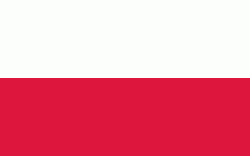Legnica
 |
 |
The city was first referenced in chronicles dating from the year 1004, although previous settlements could be traced back to the 7th century. The name "Legnica" was mentioned in 1149 under High Duke of Poland Bolesław IV the Curly. Legnica was most likely the seat of Bolesław and it became the residence of the high dukes that ruled the Duchy of Legnica from 1248 until 1675. Legnica is a city over which the Piast dynasty reigned the longest, for about 700 years, from the time of ruler Mieszko I of Poland after the creation of the Polish state in the 10th century, until 1675 and the death of the last Piast duke George William. Legnica is one of the historical burial sites of Polish monarchs and consorts.
Legnica became renowned for the fierce battle that took place at Legnickie Pole near the city on 9 April 1241 during the first Mongol invasion of Poland. The Christian coalition under the command of the Polish Duke Henry II the Pious, supported by nobles, knights, and mercenaries, was decisively defeated by the Mongols. This, however, was a turning point in the war as the Mongols, having killed Henry II, halted their advance into Europe and successfully surrounded Hungary, which Mongol forces entered through Moravia.
During the High Middle Ages, Legnica was one of the most important cities of Central Europe. The city began to rapidly develop after the sudden discovery of gold in the Kaczawa River between Legnica and the town of Złotoryja. In 1675 it was incorporated into Habsburg ruled Kingdom of Bohemia. In 1742 the city was annexed by the Kingdom of Prussia after King Frederick the Great's victory over Austria in the War of the Austrian Succession. Subsequently, it was part of German Empire from 1871, and later Weimar Republic and Nazi Germany until the end of World War II, when majority of Lower Silesia east of the Neisse (Nysa), was transferred to Poland under border changes promulgated at the Potsdam Conference in 1945, when Poland was granted the Recovered Territories.
Legnica is an economic, cultural and academic centre in Lower Silesia, together with Wrocław. The city is renowned for its varied architecture, spanning from early medieval to modern period, and its preserved Old Town with the Piast Castle, one of the largest in Poland. According to the Foreign direct investment ranking (FDI) from 2016, Legnica is one of the most progressive high-income cities in the Silesian region.
Legnica has 102,708 inhabitants and is the third largest city in the voivodeship (after Wrocław and Wałbrzych) and 38th in Poland. It also constitutes the southernmost and the largest urban center of a copper deposit (Legnicko-Głogowski Okręg Miedziowy) with agglomeration of 448,617 inhabitants. Legnica is the largest city of the conurbation and is a member of the Association of Polish Cities.
Map - Legnica
Map
Country - Poland
 |
 |
| Flag of Poland | |
Poland has a temperate transitional climate and its territory traverses the Central European Plain, extending from Baltic Sea in the north to Sudeten and Carpathian Mountains in the south. The longest Polish river is the Vistula, and Poland's highest point is Mount Rysy, situated in the Tatra mountain range of the Carpathians. The country is bordered by Lithuania and Russia to the northeast, Belarus and Ukraine to the east, Slovakia and the Czech Republic to the south, and Germany to the west. It also shares maritime boundaries with Denmark and Sweden.
Currency / Language
| ISO | Currency | Symbol | Significant figures |
|---|---|---|---|
| PLN | Polish złoty | zÅ‚ | 2 |
| ISO | Language |
|---|---|
| PL | Polish language |
















